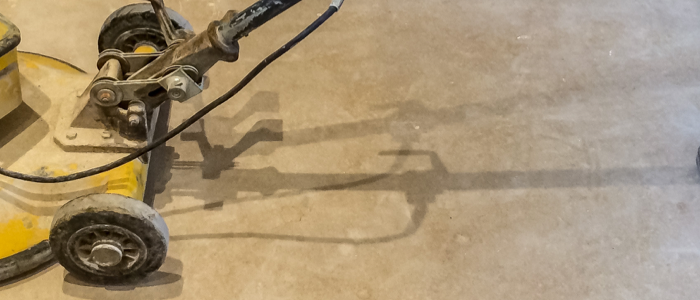When you construct a building, in essence, it is like a box. It usually has four sides, a roof, and a floor. Certainly, some modern buildings have more unusual designs, and maybe round or some other shape, but basically there are still walls, roof, and floor. All of these are critical parts of the structure but at UK Screeds we leave the walls and roof to someone else: our concern is only with the floor which is where our expertise lies.
In one sense the floor is the most critical part of the building from the safety point of view of those working in it, living in it, or visiting it. If we assume that the walls are strong and the roof will stay put and keep the weather out, the only part of the building which people have any major contact with are the floors.

Certainly, doors and windows play a part, but if there is a problem with the floor it can cause injury, which happens more often than you might think, and can sometimes be fatal, which also happens.
In fact, slips, trips, and falls account for some 40% of all injuries sustained in the workplace, and they range from minor bruises to serious life-changing injuries. Very often, injuries are caused because of the state of the floor surface: spills may not be wiped up, the chosen type of flooring may be inherently slippery (there is an answer for that), and items may be left where they cannot be seen or may hide a problem area.
However, injury can also result from the actual structure of the floor. Remember that we walk on floors all the time, and our feet are (hopefully) the only part of our bodies which come into contact with it. Therefore, it is essential that the floor is as flat and level as can be and that any spills are wiped up immediately, and that items are not left anywhere where they may cause trips and falls.
As contractors, we cannot do anything about what people do in a building after it has been constructed, such as dumping things where they shouldn’t, but ensuring that the floor is as level and flat as possible is our job. That, and installing underfloor heating where it is required.
When a contractor is constructing a new building, the floor base is made of concrete, which is fine as far as it goes because it is a strong material and can take a lot of punishment. However, it is going to have to have the actual finishing flooring laid on top of it and that is where we come in at UK Screeds.
Concrete is never going to be level enough to attach flooring to it such as tile, lino, vinyl, wood, and more, so it needs a layer of screed laid on top of it in order to achieve a surface that is as flat as possible. If it is not, there can be problems with the finishing floor surface which can result in the aforementioned slips, trips, and falls, and the ensuing injuries.
Now, at UK Screeds we install liquid anhydrite screeds which have many advantages over and above traditional sand and cement screeds, not the least of which is that we can get them to a level that is unlikely ever to be matched by sand and cement. However, despite the many advantages of liquid anhydrite screeds, there is also one slight disadvantage which does not occur with sand and cement, and it is called laitance.
If you are not familiar with the word, laitance is a layer of fine particles which form on the surface of the screed as it dries. It is vital to remove this before laying the final flooring, and we do this by sanding the floor.
We can use floor sanding machines in Reading, or wherever your project is based, which will remove the laitance and thus make the surface of the screed perfect for fixing any sort of final flooring that is required.
Ideally, you would want our specialist teams to undertake the floor sanding, but if you wish to do it yourself, we also hire out our floor sanding machines. They are the very latest models which we use ourselves to ensure the perfect screed surface.







